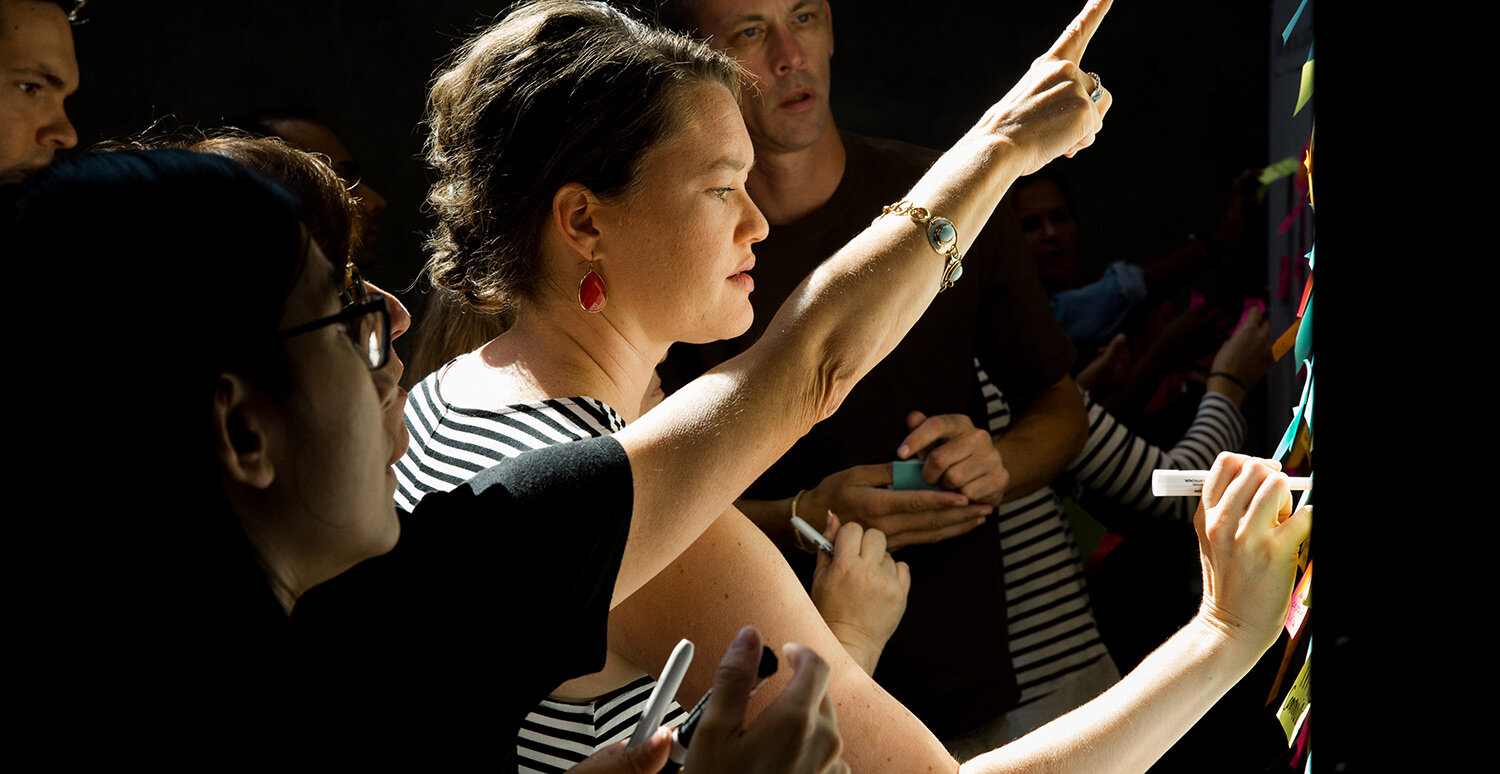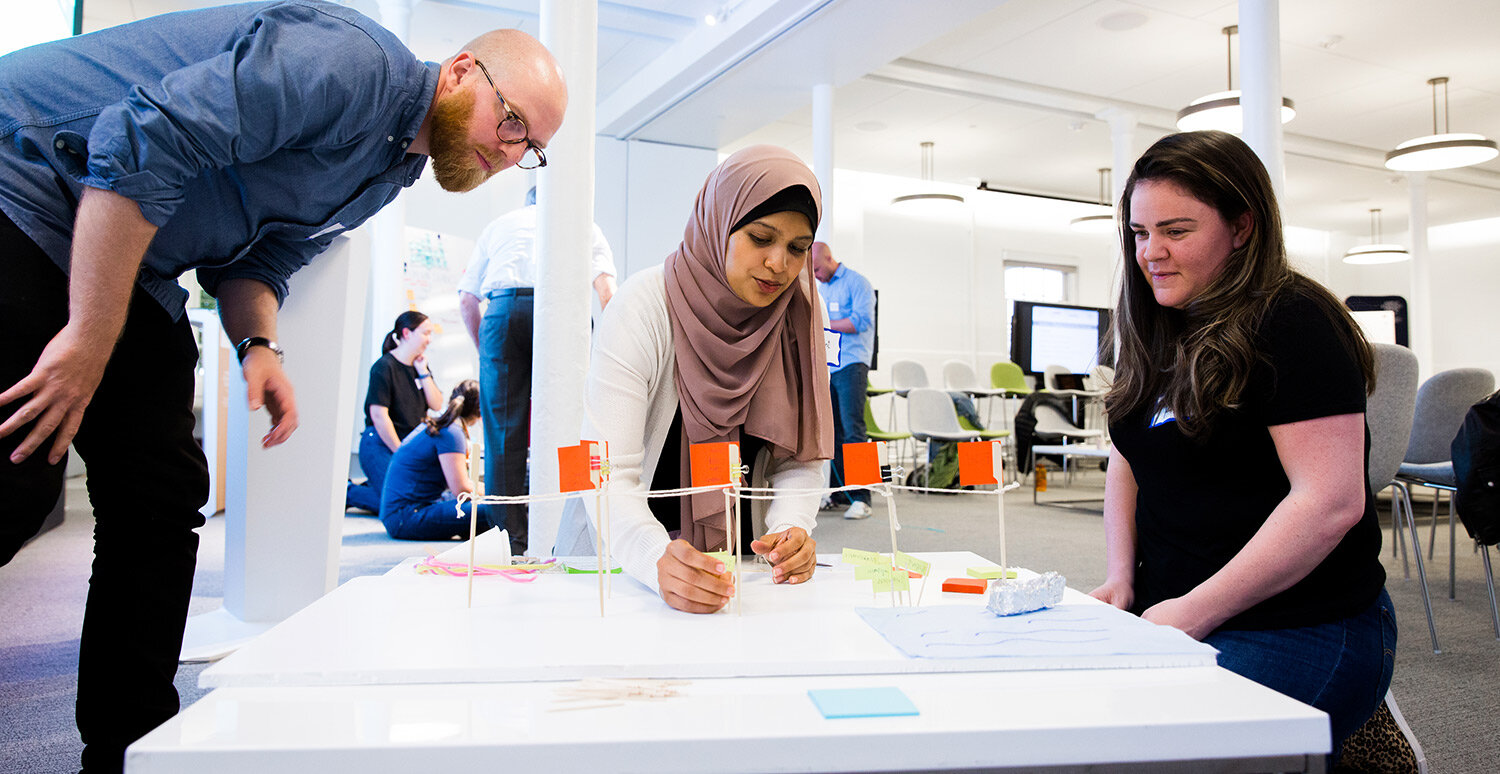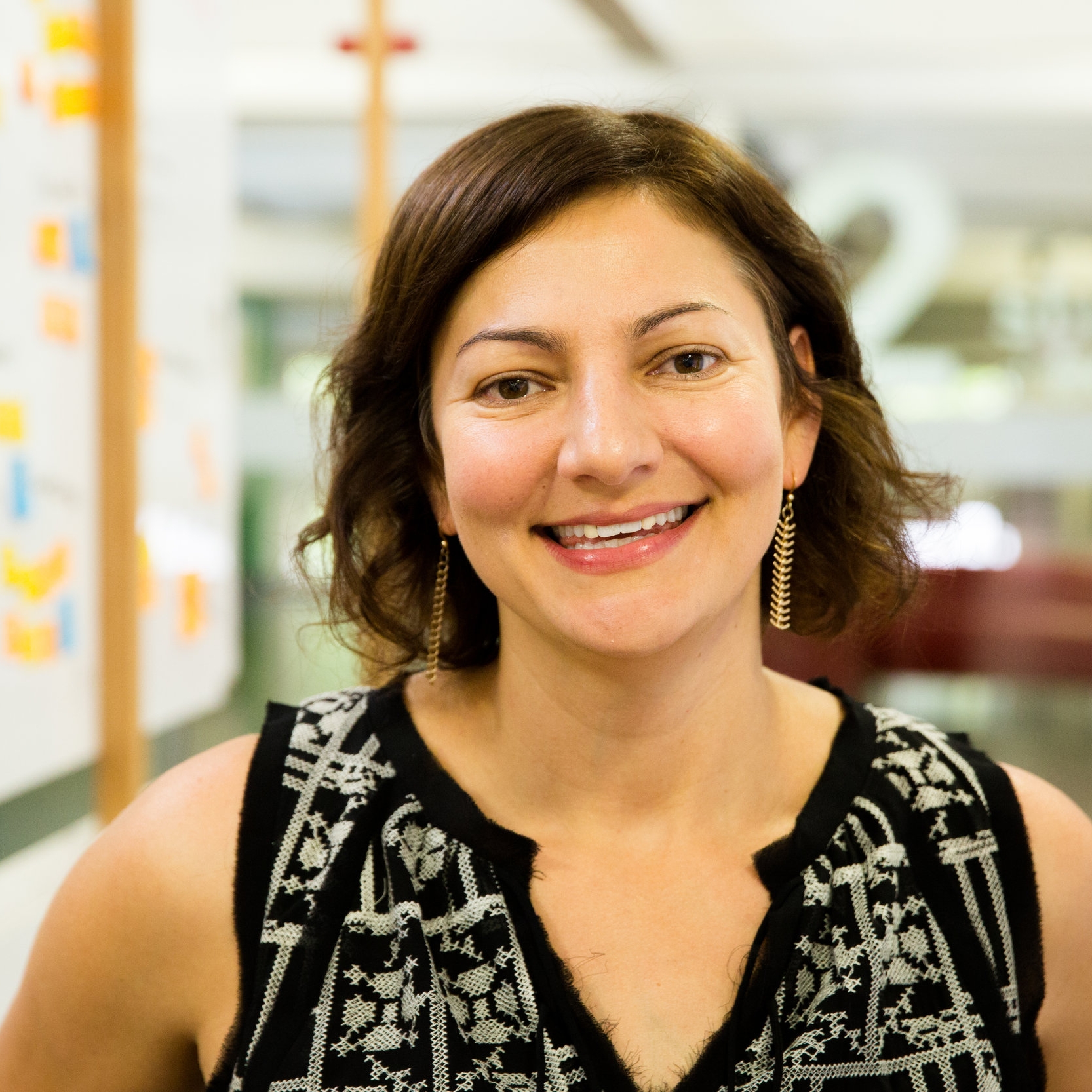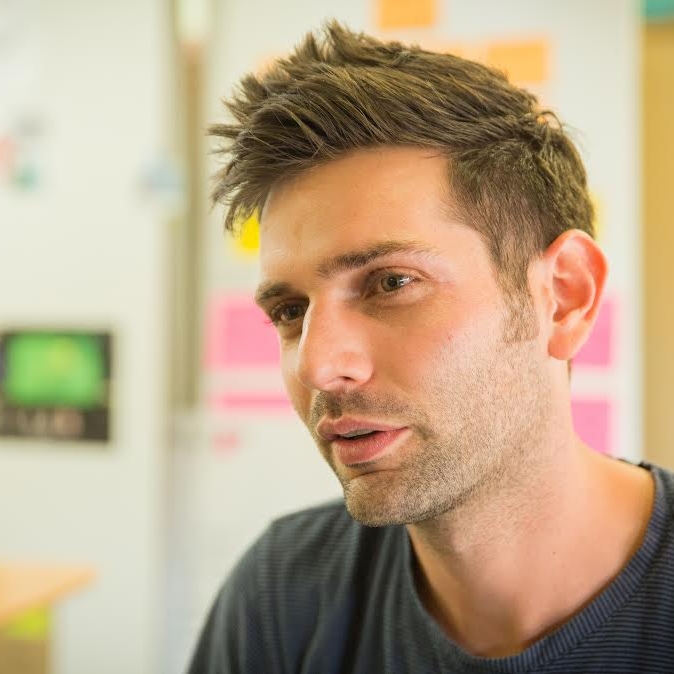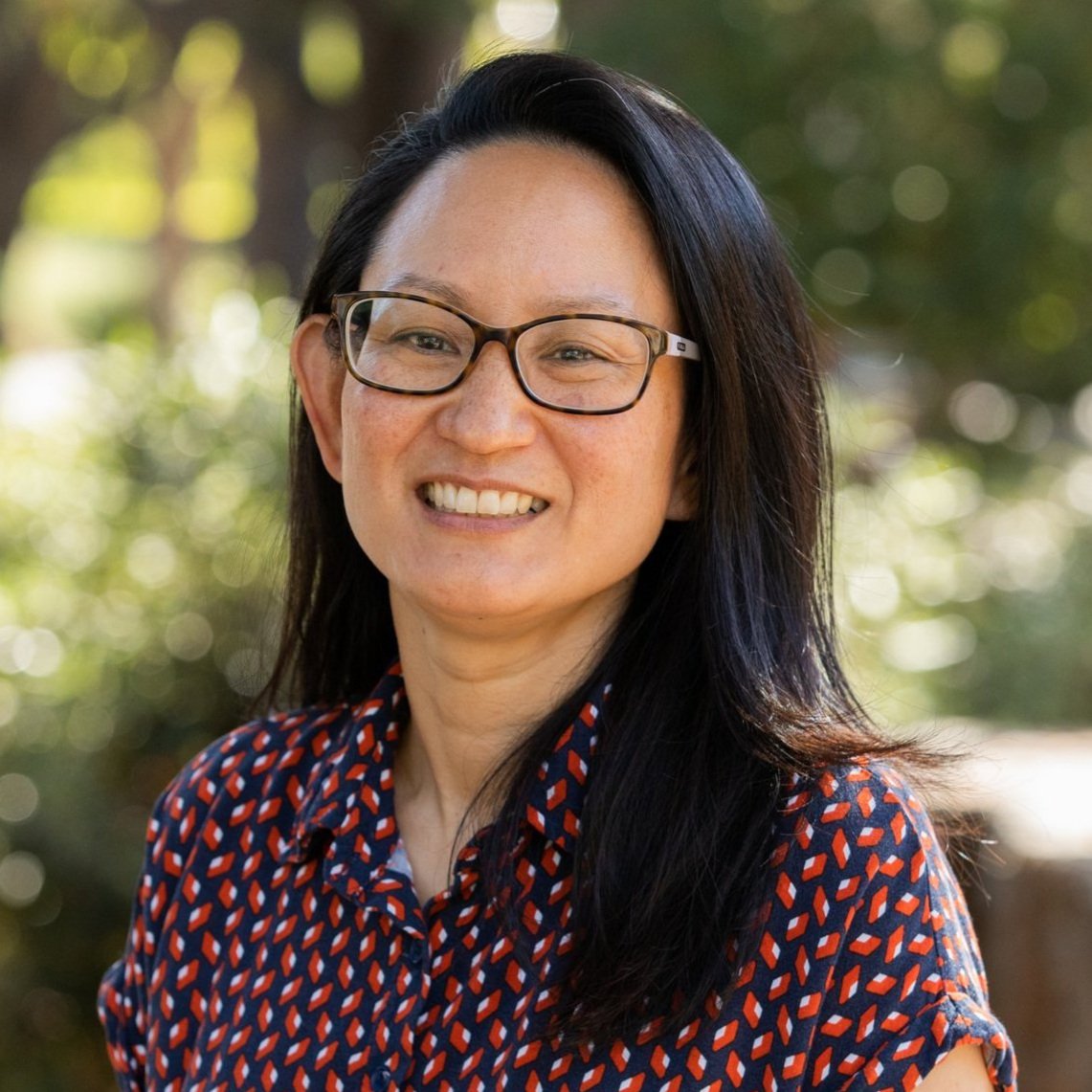The d.school helps people develop their creative abilities. It’s a place, a community, and a mindset.
What we do
We believe everyone has the capacity to be creative.
We build on methods from across the field of design to create learning experiences that help people unlock their creative potential and apply it to the world.
Design can be applied to all kinds of problems. But, just like humans, problems are often messy and complex—and need to be tackled with some serious creative thinking. That’s where our approach comes in. Adding the d.school's tools and methods to a person's skill set often results in a striking transformation. Newfound creative confidence changes how people think about themselves and their ability to have impact in the world.
How we do it
Here’s what that looks like at the d.school
Radical collaboration. To inspire creative thinking, we bring together students, faculty, and practitioners from all disciplines, perspectives, and backgrounds—when we say radical, we mean it! Different points of view are key in pushing students to advance their own design practice. Our methods become a shared language for groups to navigate the ups and downs of messy challenges.
Real-world projects. Students want to make real impact in the world. We think they can start immediately. Our classes challenge them to tackle problems that are happening right now, not the ones from a textbook page. We work with partners from non-profit, corporate, and government organizations to develop projects that address real-world challenges.
Unbounded problems. Like in life, there is no single right answer in a d.school class. The problems are complex and ambiguous. The solutions are uncertain and unclear. We give students ample opportunities to experiment, take creative risks, and fail. It's great preparation for real-world problem solving—because it is real-world problem solving.
100% opt-in culture. The people who are here want to be here. No student or faculty member at Stanford is required to participate.
Everyone is Creative
We aim to actively
confront and challenge the mindset that design can only be used by a privileged few.
The d.school's mission is to help people unlock their creative abilities and apply them to the world. It reflects our foundational belief that design should be accessible to all, and that everyone is creative.
We believe design can help create the world we wish for. Design can activate us as creators and change the way we see ourselves and others. Design is filled with optimism, hope, and the joy that comes from making things change by making things real. We believe that diversity leads to better design, and opens up a greater range of creative possibilities.
The nature of design affords people the opportunity and privilege to shape the world that they-and others-inhabit. This is power. In a just world, that power is shared, prioritizing the voices and ideas of people most impacted by the intended and unintended effects of new designs. We aim to actively confront and challenge the mindset that design can only be used by a privileged few.
Given our ideals, we have work to do.
Navigate Ambiguity
This is the ability to recognize and persist in the discomfort of not knowing, and develop tactics to overcome ambiguity when needed.
Design is loaded with uncertainty. As a result, it involves being present in the moment, re-framing problems, and finding patterns in information. Ambiguity can arise in many places – within a project, a process, or within oneself. It’s important to put students in ambiguous situations and give them tactics to emerge from them.
Learn from Others (People and Contexts)
This means empathizing with and embracing diverse viewpoints , testing new ideas with others, and observing and learning from unfamiliar contexts.
Throughout a design project, it’s important to recognize and take the opportunity to learn from others–both end users and other stakeholders and team members. There is a sensitivity to others that develops with this ability.
Synthesize Information
This is the ability to make sense of information and find insight and opportunity within.
Data comes from multiple places and has many different forms, both qualitative and quantitative. This ability requires skills in developing frameworks, maps, and abductive thinking. Synthesis is hard for new students. It takes time and is interdependent with navigating ambiguity.
Experiment Rapidly
This ability is about being able to quickly generate ideas – whether written, drawn, or built.
In order to rapidly experiment, you must be able to relax your mind and reach a mode of acceptance. This will eliminate the natural tendency to block ideas that seem off or unfeasible. Then, let your doing lead your thinking – and lead with your hands. This ability pairs naturally with Learn From Others. In many instances, you are experimenting by both generating a flood of new concepts at low resolution (brainstorming) and testing some of those concepts with potential users.
Move Between Concrete and Abstract
This ability involves understanding stakeholders and purpose in order to define the product or service’s features.
Everything is connected. When students are building out a new concept –whether a product, service, or experience – they need to be able to nest the concept within the larger ecosystem that relates to it. We have Ray and Charles Eames to thank for helping us set the scene for this ability. It involves abstraction to define meaning, goals, and principles, as well as precision to define details and features.
Build and Craft Intentionally
This ability is about thoughtful construction: showing work at the most appropriate level of resolution for the audience and feedback desired.
There are many sub-disciplines of design, each with their own set of tools and techniques. This ability requires a sensitivity to the tools needed to create meaningful work in your domain. UX designers have a specific set of tools to create human-centered digital interfaces. Architects have an arsenal of particular techniques to bring new structures into the world. Every discipline – immunology, macroeconomics, K12 education, whatever it may be – has its own building methods, and in every case, the details matter.
Communicate Deliberately
This is the ability to form, capture, and relate stories, ideas, concepts, reflections, and learnings to the appropriate audiences.
Communication happens in a variety of contexts. It may include reflecting on your performance to a project team or crafting a video to show your product to a potential investor. As we practice experiential learning at the d.school, communication and storytelling are paramount.
Design your Design Work
This meta ability is about recognizing a project as a design problem and then deciding on the people, tools, techniques, and processes needed to tackle it.
This ability develops with practice. We see it emerge in our more experienced students. It requires using intuition, adapting old tools to new contexts, and developing original techniques to meet the challenge at hand.
Our impact
The d.school’s impact can be seen in a variety of ways: within students themselves, on the Stanford campus, in the education system, and in the world at large.
A band of creative individuals makes this place possible.
The home team
Meet our community of educators, designers & creative thinkers.
Our team members are featured in various places throughout the site. Here's how to find us.
Program Teams - Find us by program.
Teaching Teams - See the classes we're currently offering.
Faculty - Professors from across campus collaborate here.
Home Team - We're the folks who keep the hearth fire lit. Find us below.
For a full list, see our directory.
How to start a d.school
People often ask us how to start a “d.school.” The real answer is, there’s no foolproof recipe. Every context has its own contours. Every culture has its own quirks. What we can share is how the Stanford d.school came to be.
